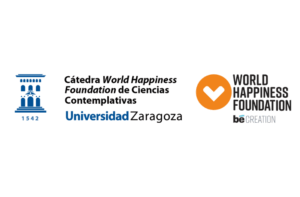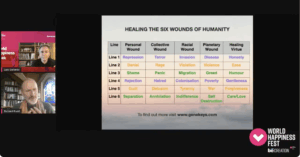
Happytalism and the 2025 Doha Political Declaration: A Paradigm Shift for Social Transformation
Executive Summary The Doha Political Declaration adopted at the 2025

The World Happiness Foundation envisions Quality Education (SDG 4) through an abundance mindset. Traditional approaches often focus on deficits – e.g. eradicating illiteracy or “filling gaps” – which reflects a scarcity mindset. In contrast, our Happytalist perspective emphasizes building on possibilities and strengths. We believe “there is more to life than the cold numbers of GDP”, so education must likewise transcend rote academics. An abundance approach means nurturing what we do want – well-being, creativity, compassion – not merely combating what we don’t want. This mindset shift aligns with Happytalism, a paradigm that focuses on systematically pursuing happiness and well-being for all. In practical terms, this implies reframing SDG 4 from access to education toward quality holistic education that empowers individuals to flourish. We call this “Mindful Education & Lifelong Learning” – providing learning that nurtures the whole person (head, heart, and spirit) and cultivates lifelong learners who contribute to a happier society.
This abundance-oriented vision is both visionary and practical. It complements the SDG 4 goal of inclusive, equitable education by specifying how to achieve it: through curricula that foster emotional intelligence, compassion, and consciousness. By focusing on positive outcomes (like well-being and character development), we galvanize hope and collaboration rather than fear or competition. An abundance mindset in education encourages educators, policymakers, and communities to see that the resources for human flourishing – empathy, knowledge, creativity – are inexhaustible and can be shared by all. In other words, quality education is not a finite “pie” to compete over, but a growing collective asset. Our position is diplomatic in acknowledging the SDGs’ noble aims, yet strong in urging this fundamental shift: by infusing education with an abundance mindset, we unlock the full potential of SDG 4 to transform society.
Mindful Education & Lifelong Learning means placing well-being and personal growth at the core of schooling – not as a luxury, but as a foundational goal. A growing body of research supports this approach. According to the OECD, students with stronger social and emotional skills tend to achieve better academically and lead happier, healthier lives. In other words, fostering skills like empathy, self-awareness, resilience, and curiosity isn’t a distraction from academic excellence – it’s an enabler of it. Education systems that integrate social-emotional learning (SEL) see improvements in academic outcomes and student well-being, a true win-win. This evidence dispels the old myth that education’s only purpose is cognitive development; in fact, happy, emotionally intelligent students learn better and grow into more productive, compassionate citizens.
Crucially, nurturing the “whole person” involves more than a few add-on lessons – it calls for a cultural shift in schools and communities. Classrooms must become environments where emotional intelligence, mindfulness, and character are actively cultivated alongside literacy and numeracy. This could mean starting the day with mindfulness exercises, integrating collaborative projects that teach teamwork and empathy, and encouraging critical thinking about moral and societal issues. It also means training and supporting teachers to be role models of compassion and conscious awareness. Our Foundation’s experience shows that when teachers themselves embody well-being and empathy, they become powerful catalysts for positive change in their students and beyond. Ultimately, a mindful education system treats happiness and personal growth as both a means and an end of learning – a core part of its mission.
Around the world, a vibrant movement is growing to align education with emotional well-being, happiness, and human flourishing. We take inspiration from many pioneering initiatives and policies that prove this approach is both feasible and effective. Below we highlight several examples of innovative, practical efforts – from international frameworks to national curricula – that embody the principles of mindful, happiness-focused education:
These diverse initiatives – from UNESCO frameworks to national curricula and grassroots school programs – reinforce a common message: education systems are undergoing a paradigm shift. There is a growing global recognition that success in education must be defined by more than academic achievement; it must include well-being, character, and happiness. This shift is both visionary and eminently practical. It nurtures healthier, more socially responsible students and yields better learning. Our Foundation stands alongside these efforts, helping connect the dots into a cohesive global movement for Mindful Education and lifelong learning.
As part of our commitment to SDG 4, the World Happiness Foundation has launched the “Schools of Happiness” program – a strategy to transform educational ecosystems from within. Our approach is practical and action-oriented, yet rooted in the visionary ideal that every school can be a hub of well-being and joy. The Schools of Happiness initiative works by empowering those at the heart of education: teachers, administrators, students, and parents. We focus on training educators to become “catalysts of happiness” in their communities, equipping them with the mindset and skills to lead positive change in the classroom. Through our Teachers of Happiness training (Docentes de Felicidad), over 45,000 teachers across Latin America, Mexico, and Spain have been trained in techniques like mindfulness, emotional intelligence, and compassionate communication. These teachers learn to integrate advanced well-being curricula and practices into daily teaching, effectively becoming conscious leaders of change within their schools.
The Schools of Happiness model is holistic. It aims to create school environments where students thrive academically, emotionally, and socially. This means fostering a school culture that values happiness and health as much as grades – a culture where kindness is modeled, student voice is encouraged, and community well-being is a shared goal. In practice, participating schools implement a range of activities: mindfulness sessions for students and staff, “gratitude circles” or reflection journals in class, project-based learning linked to empathy and community service, and redesigning school spaces to be more inviting and calming. We encourage schools to tailor interventions to their unique context, while adhering to core principles of positivity, inclusivity, and resilience. Significantly, we see the ripple effects: happier classrooms lead to more engaged learners, reduced conflict and stress, and stronger relationships among students, teachers, and parents. These, in turn, extend beyond school walls – families report children bringing home mindfulness techniques and compassionate behaviors, thereby spreading the benefits into the broader community.
Our strategy is also deeply aligned with global partners. We collaborate with organizations like UNESCO and the Gross Global Happiness network to amplify best practices and advocate for policy support. For example, we supported UNESCO’s Happy Schools framework rollout and facilitated cross-cultural learning sessions (connecting, say, educators in Spain with those in Bhutan or Mexico to share experiences). By acting as a convener and knowledge hub, the World Happiness Foundation helps knit together the many promising experiments worldwide into a coherent movement for educational well-being. We also champion the measurement of happiness in education – encouraging schools and governments to use metrics like happiness indices or student well-being surveys to guide decision-making, much as Bhutan uses GNH. Measurement, when done thoughtfully, reinforces that what gets measured gets prioritized: if we measure happiness and emotional growth, we signal that these truly matter.
Importantly, the Schools of Happiness approach remains grounded in evidence and continuous learning. We draw on interdisciplinary research (psychology, neuroscience, pedagogy) to refine our trainings and tools. We emphasize that a “happy school” is not one without challenges, but one that has the skills and supports to navigate challenges constructively. Thus, our framework includes building resilience and coping strategies – so that students learn to face adversity with a growth mindset and optimism, rather than fear. It also involves conscious leadership training for school leaders, using models like our ROUSER framework for regenerative leadership (focusing on elements like empathy, systems thinking, and resilience). By infusing leadership development into the program, we ensure the changes are sustainable and systemic, not just one-off classroom activities. The long-term vision is nothing less than to embed happiness and well-being into the DNA of education systems – so that in the future, the idea of a school without social-emotional learning or without a focus on mental health would be as unthinkable as a school without math or science.
In summary, the World Happiness Foundation’s position on SDG 4 is clear and resolute: Education must evolve to fully embrace happiness, well-being, and holistic human development as both its means and end. Achieving this will require a coalition of willing hearts and minds – educators, students, parents, policymakers, and organizations worldwide coming together. We are optimistic: the inspiring initiatives from Colombia to Denmark, from Bhutan to India, show that this transformation is already underway and yielding results. Our role is to accelerate and unite these efforts under an abundance mindset, proving that quality education is not a zero-sum game but a universal uplift that benefits all.
We call on policymakers to prioritize and fund SEL programs, teacher training in well-being, and curricula that include mindfulness and ethics. We urge schools and universities to experiment boldly with happiness classes, positive education models, and whole-school well-being frameworks – and to share what they learn. We invite teachers and students to become “happiness rousers” in their own context: small daily acts, like a mindfulness minute or a gratitude practice in homeroom, can ripple outward and start changing the culture. And we encourage the global development community to integrate the Happytalist lens when assessing SDG 4 progress: let’s track not just enrollment and test scores, but also how students feel and flourish.
This is a diplomatic and inclusive vision – it builds on existing global goals and celebrates others’ contributions – yet it is also visionary and strong in pushing the boundaries of what education can be. We see a future where every school is a School of Happiness, every teacher is also a mentor in life skills, and every student gains not only knowledge but also the wisdom to use it kindly and the emotional resilience to navigate an ever-changing world. In this future, learning is lifelong and life-wide, with communities and schools working together to support each person’s development of mind, body, and spirit.
Ultimately, Mindful Education & Lifelong Learning is about educating not just for a living, but for a life – a happy, meaningful life. By embracing this abundance mindset and nurturing the whole person, we can fulfill the true promise of SDG 4. Education will then become the engine of a global transformation towards a more conscious, compassionate, and joyful world. As we invest in the happiness of our children and learners today, we are, in fact, investing in the collective happiness and peace of humanity for generations to come. The World Happiness Foundation stands ready to work with all stakeholders to realize this bold and beautiful vision.

Executive Summary The Doha Political Declaration adopted at the 2025

Introduction: Science and Spiritual Wisdom United for Peace Every year

Humanity carries deep core wounds that have shaped our personal